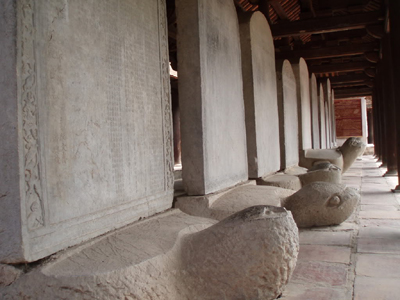Doctoral steles recognized as world documentary heritage
VGP – The files on stone steles bearing names of doctoral laureates, dated back the Lê and Mạc Dynasties (15th-17th centuries), in the Hà Nội Temple of Literature were recognized as the World Documentary Heritage.
The decision was made in
the annual plenary of the UNESCO's Memory of the World in

Stone
steles in Hà Nội’s stone steles are considered a stone history book
So far, the doctoral laureate
steles were Việt
|
The Founded in the 11th century as a temple dedicated to
Confucius and then the country’s first university, Văn Miếu-Quốc Tử Giám was
the biggest educational center where thousands of eminent scholars were
trained. Its campus houses a garden of 82 stone steles honoring all doctoral
laureates of the royal examinations held between the 15th and 18th
centuries. |
The stone steles in the
Second, each inscription highlights feudal dynasties’ viewpoints and
philosophy of national construction and protection, cultural preservation,
education development, nurturing and using talented people.
Third, the steles provide many details of the biographies of thousands
of Vietnamese celebrities.
Fourth, the Chinese characters, carved on the steles, are evidences for
the development of the Chinese script in Việt
Fifth, each stele is a work of art bearing different styles.

